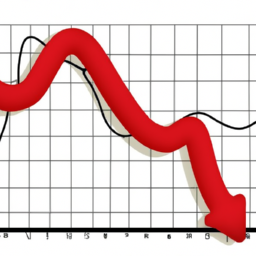Stocks are a popular form of investment that can provide significant returns over time. However, stock prices can be volatile over short periods of time, making it challenging to predict their behavior accurately. Several factors influence the current value of a stock, and investors need to understand them to make informed decisions.
One of the most critical drivers of stock prices is the company's financial performance. A company's earnings, revenue, and growth prospects are critical indicators of its future profitability. If a company's financial results exceed market expectations, its stock price is likely to increase. Conversely, if a company's financial performance is weaker than expected, its stock price may decline.
Another essential factor that affects stock prices is the market sentiment. The market sentiment refers to the collective attitude of investors towards a particular stock or the market as a whole. Positive market sentiment can drive up stock prices, while negative sentiment can lead to a decline in stock prices.
Supply and demand are also significant determinants of stock prices. When there is high demand for a stock, its price will increase. Conversely, when there is low demand for a stock, its price will decrease. The number of shares available for trading can also influence supply and demand dynamics, as a shortage of shares can drive up prices.
Inflation is another factor that can impact stock prices. Inflation can erode the value of a company's earnings and reduce its purchasing power. As a result, investors may demand a higher return on their investment, causing stock prices to decline.
The state of the economy is also a crucial driver of stock prices. During periods of economic growth, companies tend to perform well, leading to an increase in stock prices. Conversely, during periods of economic recession, companies may struggle, causing stock prices to decline.
Interest rates are another critical factor that can impact stock prices. When interest rates are low, investors may shift their investments from fixed-income securities to stocks, driving up stock prices. Conversely, when interest rates are high, investors may prefer fixed-income securities, leading to a decline in stock prices.
Political and regulatory factors can also affect stock prices. Changes in government policies, regulations, or geopolitical events can create uncertainty and volatility in the market, leading to fluctuations in stock prices.
Investors must also consider the intrinsic value of a stock when determining its current value. Intrinsic value refers to the true value of a stock based on its fundamentals, such as earnings, revenue, and growth prospects. Understanding a stock's intrinsic value can help investors determine whether it is undervalued or overvalued, providing insights into potential investment opportunities.
To determine the current value of a stock, investors must also consider the company's capital assets and current assets. Capital assets are significant pieces of property such as homes, cars, investment properties, stocks, bonds, and even collectibles or art. Current assets are assets that can be converted into cash within one year, such as cash, accounts receivable, and inventory.
The current account is another critical indicator that investors must consider when determining a stock's current value. The current account records a country's imports and exports of goods and services, foreign investors' payments, and transfers. A country with a positive current account balance is typically seen as more attractive to investors, leading to an increase in stock prices.
In conclusion, several factors influence the current value of a stock, including a company's financial performance, market sentiment, supply and demand, inflation, the state of the economy, interest rates, political and regulatory factors, intrinsic value, capital assets, current assets, and the current account. While predicting stock prices can be challenging, understanding these key drivers can help investors make informed investment decisions.
Ticker: None
